Hue city, Vietnam: Top 11 Places to Visit
When you want to find tranquility and peace in your life, come to Hue. This place not only possesses ancient relics, diverse cultures, and cuisine but also boasts some of the most beautiful beaches in Vietnam. In this article, we will explore the details of traveling to Hue and the places to visit when you come to Hue.
Overview of Hue
Hue is a city located in the central region of Vietnam, where there is the narrowest strip of land on the map of Vietnam, yet this place contains a treasure trove of history, heritage, and recognized UNESCO landscapes. Hue has all the elements to become the most attractive tourist destination in Vietnam for those who love to explore culture, history, people, cuisine, and beach resorts. The geographical location of Hue is also very convenient for travelers as they can easily move very close to Hoi An or Da Nang, both of which are the best destinations not to be missed when visiting Vietnam.
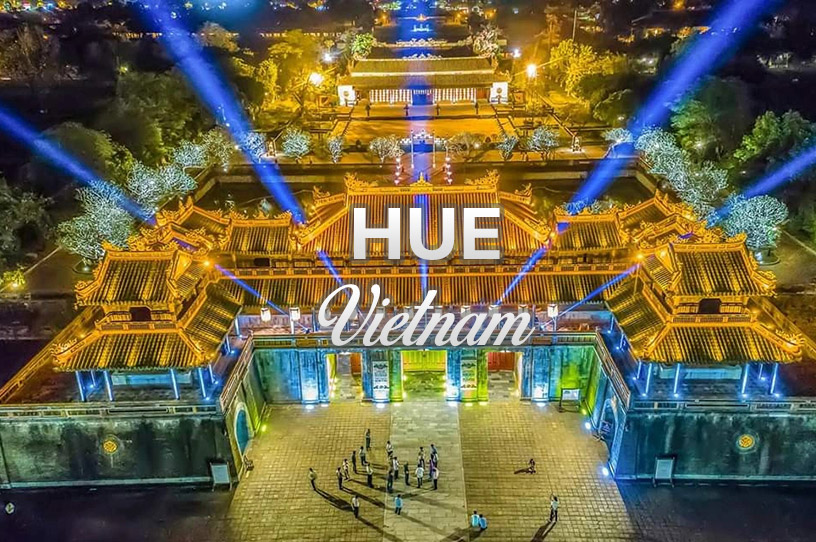
Best Time to Visit Hue
Situated in the middle of the map of Vietnam, Hue has a mild climate that combines the heat of the South and the cold of the North.
The rainy season and storms in Hue typically occur from May to November, which is the period when the Central Vietnam often experiences storms and sudden rain. So, if you visit Hue during this time, it’s advisable to monitor the weather before planning your trip.
The best time to visit Hue for tourism is from November of the previous year to April of the following year. The ideal time to visit Hue is from January to April when the weather is cool, with less rain, and also when many festivals take place in Hue.
Transportation to Hue
Hue has adequate tourism infrastructure, including an airport, railways, and highways, making it easy for travelers to get here.
By plane
As a major city in the Central region, Hue is serviced by Phu Bai Airport, which is convenient for travel. For those travelers who want to save time, the quickest way is to purchase a flight to Hue. The flight time from Hanoi or Ho Chi Minh City is approximately 1 hour.
By train
Train travel is an interesting option for those who want to take their time and enjoy the scenery along the way. Hue has a railway station on the North-South railway line. You can check the schedule and buy tickets for the appropriate train on the official website of the Vietnam Railways: https://dsvn.vn.
By car
For journeys less than 200 km, you can reach Hue by car to save time. Vietnam is currently building a network of highways connecting various provinces, promising increased convenience for car travel to Hue in the future.
Moving around in the city of Hue, you can find suggestions in this article: Most Common Transportation in the Cities of Vietnam
Best Places to Visit in Hue
Imperial City of Hue (The Royal Palace)
The Imperial City of Hue, also known as the Royal Palace, is the most famous tourist destination in Hue. If you skip this place, it’s as if you’ve never been to Hue. Inside the Royal Palace, you’ll find the Forbidden Purple City (where the king worked) and the Forbidden City (where the king lived), featuring over 100 architectural structures built during the Nguyen dynasty, spanning various Vietnamese feudal dynasties. It was recognized as a UNESCO World Heritage Site in 1993.
To complete the grand structures within the Royal Palace, it took multiple generations of kings and a long process. However, all were built following strict principles of feudal-era architecture, using the finest materials of that time.

Tomb of Tu Duc
Located about 5 km from the city center of Hue, the Tomb of Tu Duc, also known as Khiem Lang, was constructed between 1864 and 1867 on a 475-hectare site with nearly 50 various-sized buildings, all bearing the word “Khiem.” The tomb of Emperor Tu Duc is a historical relic within the complex of Hue’s ancient relics. This is where the fourth emperor of the Nguyen dynasty, Emperor Tu Duc, is buried. He reigned for 36 years from 1847 to 1883, making him the longest-reigning monarch of the Nguyen dynasty.
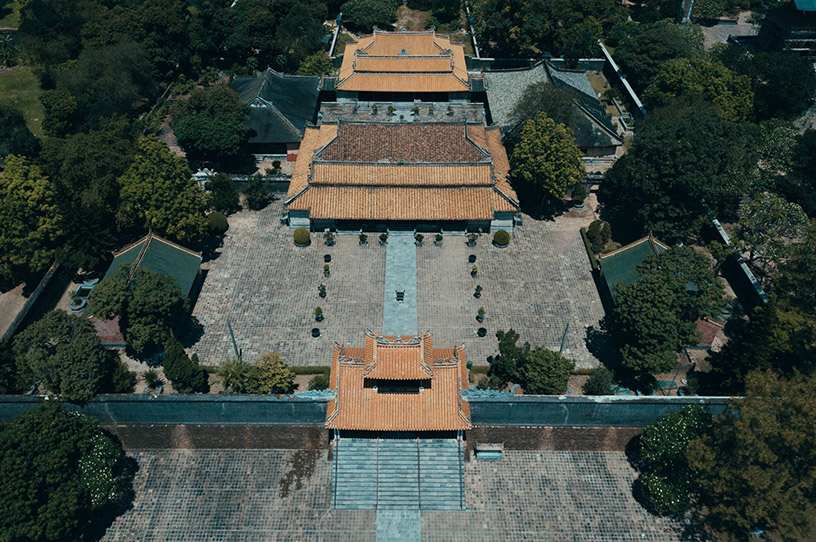
Tomb of Minh Mang
The Tomb of Minh Mang, also known as Hieu Lang, is another historical relic within the complex of Hue’s ancient relics. It’s the final resting place of the second emperor of the Nguyen dynasty, Emperor Minh Mang. He made significant contributions to the development of Vietnam and its inclusion among the five largest nations in Southeast Asia at the time.
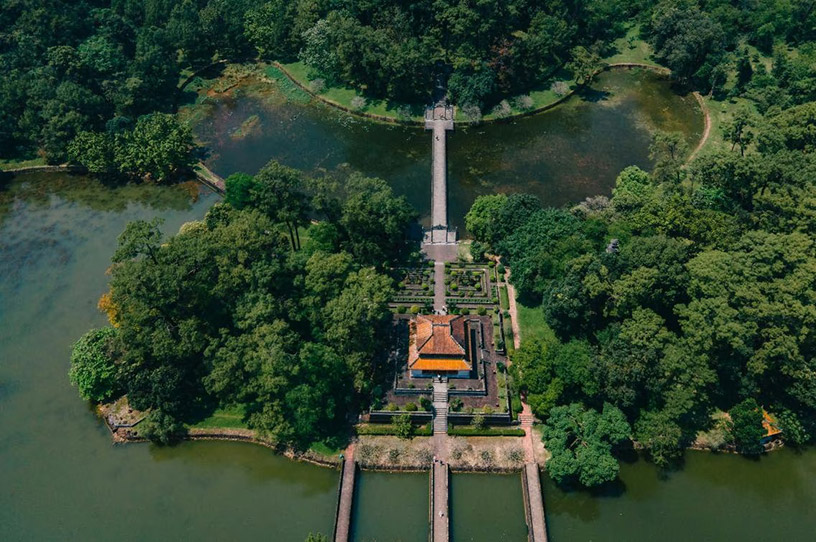
Khai Dinh Tomb
The Khai Dinh Tomb, also known as the Ung Lang, is the tomb of King Khai Dinh (1885-1925), the 12th and last king of the Nguyen dynasty. It is situated on the slopes of Chau Chu mountain just outside the Imperial City of Hue. This tomb is the most grandiose and architecturally complex of all the royal tombs. Although it has a smaller footprint compared to the tombs of previous kings and is not in a prime location, the Khai Dinh Tomb is the most visited due to its unique architecture, combining various architectural styles from both Eastern and Western cultures, reflecting the opulent tastes of the king at the time.
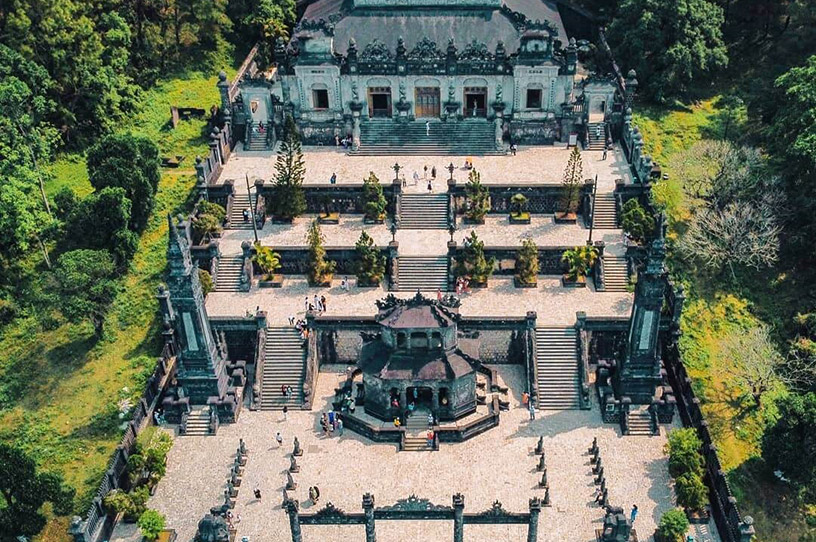

Thien Mu Pagoda
Located about 5 km west of the Imperial City of Hue and the city center, Thien Mu Pagoda (also known as Linh Mu Pagoda) sits on Ha Khe Hill, overlooking the serene Perfume River. This ancient temple, over 400 years old, was built in 1601 by Nguyen Hoang, the first king of the Nguyen dynasty. Thien Mu Pagoda is the only Vietnamese temple listed in Lonely Planet’s Top Beautiful Temples in Asia. Today, it is a symbol of serenity in the ancient capital of Hue and is a must-visit destination for any traveler to Hue.
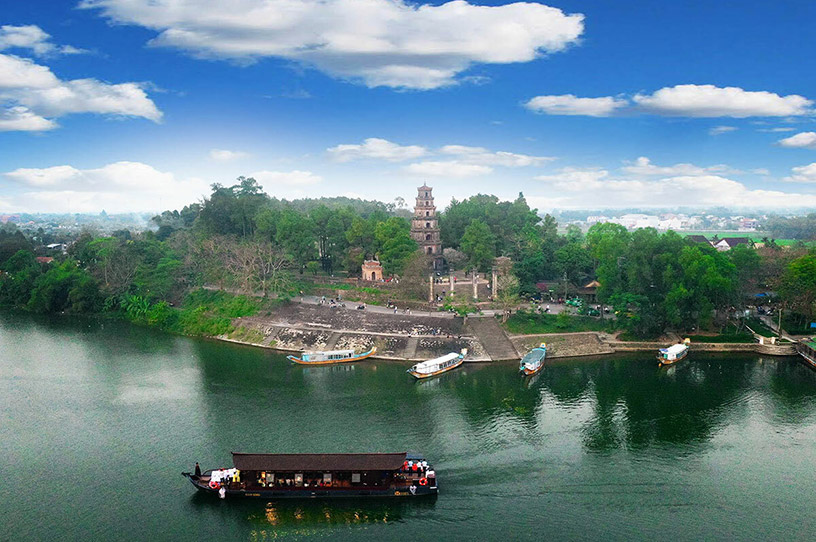
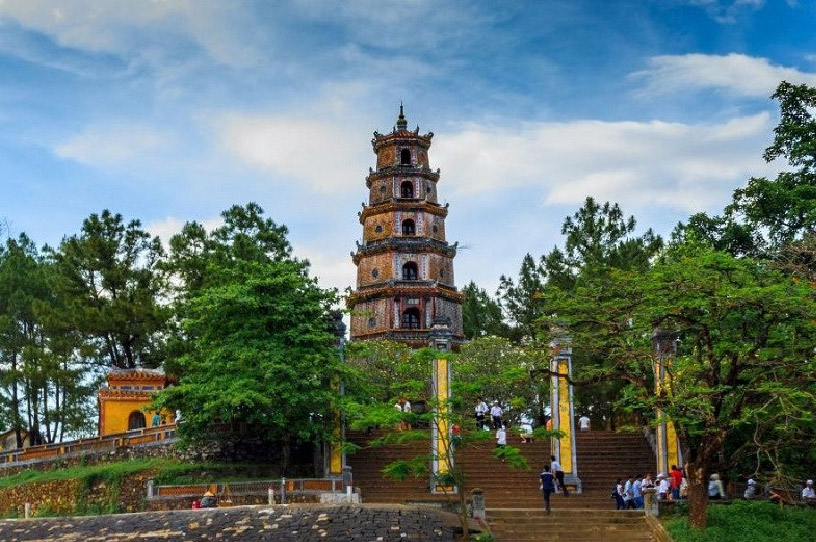
Huong River
The Huong River, stretching approximately 80 km, is a renowned river not only in Hue but also deeply entwined with the region’s history. It has been the subject of numerous poems and literary works by famous Vietnamese writers. The Huong River flows through many famous landmarks in the central part of Hue. You can purchase boat tickets to experience the exploration of Hue along this river.
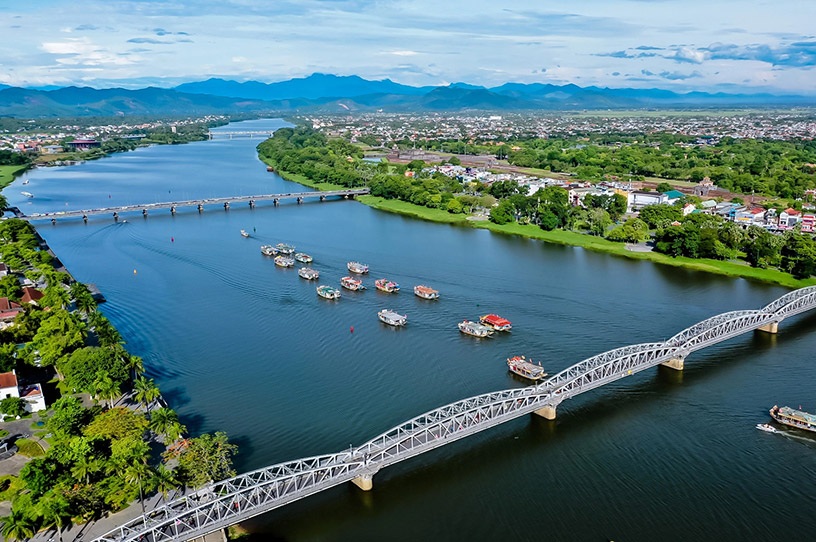
Truong Tien Bridge
Truong Tien Bridge, also known as Thanh Thai Bridge or Trang Tien Bridge, is located in the center of Hue. It is a bridge that spans the Huong River and was designed and completed by the French in 1889. Despite enduring numerous wars and conflicts over the years, Truong Tien Bridge still stands strong and retains its historical significance. Today, the bridge serves as a witness to history and a popular attraction for many visitors to Hue.
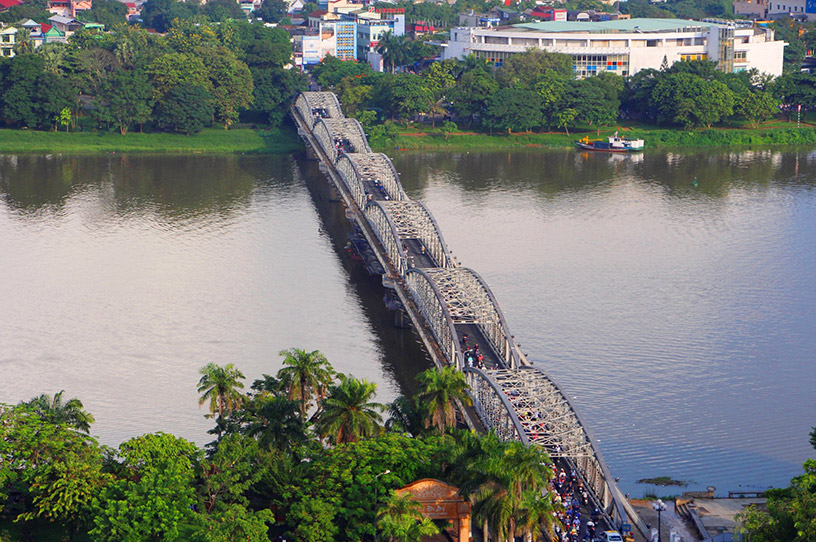
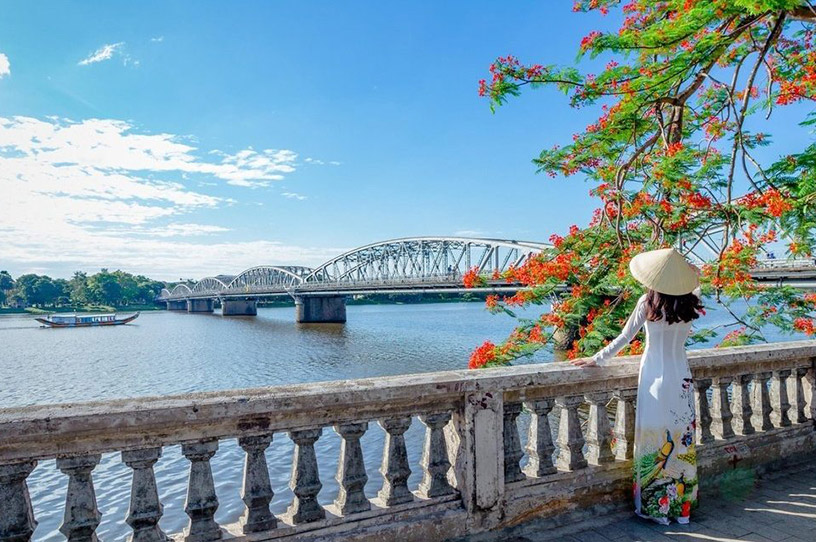
Quoc Hoc Hue Gifted High School
Quoc Hoc Hue Gifted High School was established during the reign of King Thanh Thai in 1896. With an area of 4,237 square meters, it is one of the oldest and most prestigious high schools in Vietnam. This is where many famous politicians, artists, professors, and doctors of Vietnam received their education. The school features unique architecture and is situated along the banks of the Huong River. Initially, the school comprised small buildings, but by 1914, these were replaced with two-story brick buildings in a solid Western style. This architecture has been maintained to this day.
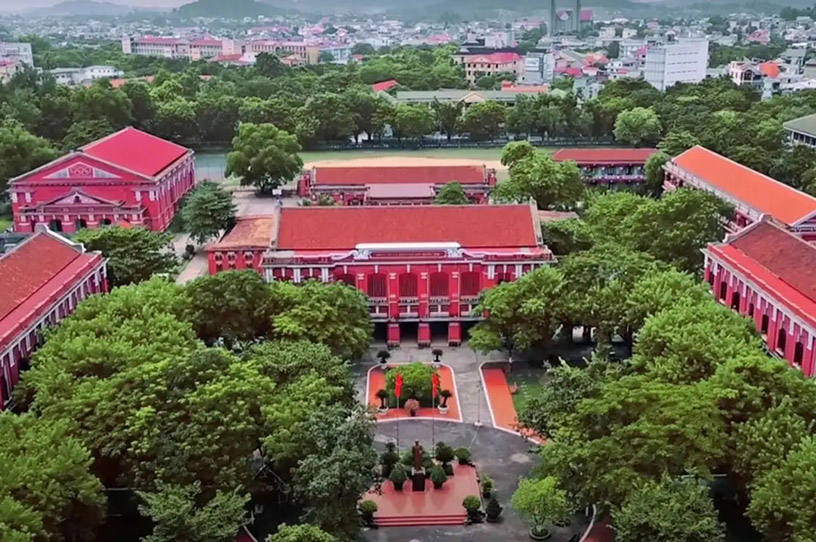
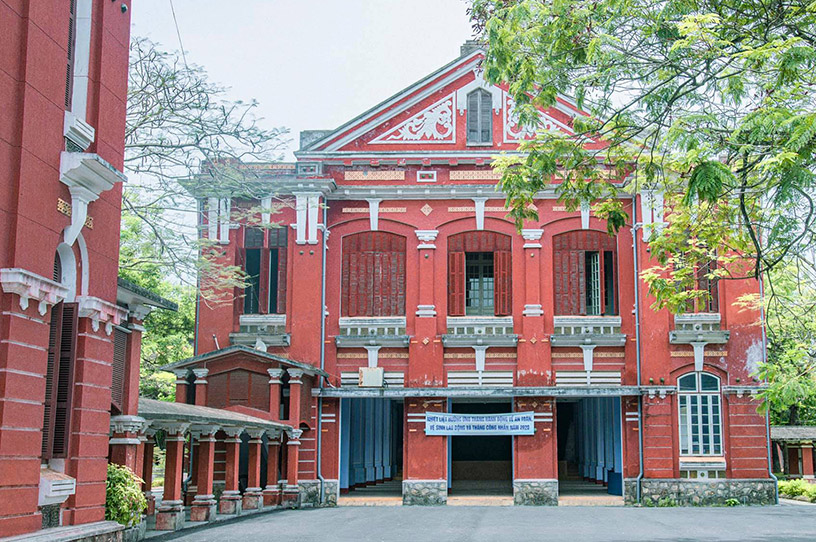
Hue Walking Streets
Walking streets are an essential part of any tourist city, and in Hue, the walking streets include Pham Ngu Lao, Chu Van An, and Vo Thi Sau. They extend over 1 km and are open during the final three days of the week. With significant investment, Hue’s walking streets offer an ideal destination for high-quality entertainment and recreational activities, attracting both domestic and international tourists.
Bach Ma National Park
Bach Ma National Park covers an area of approximately 37,500 hectares and is located 40 km away from Hue. It is a renowned eco-tourism destination with magnificent natural landscapes, attracting numerous explorers, particularly foreign tourists who love to discover the beauty of nature.
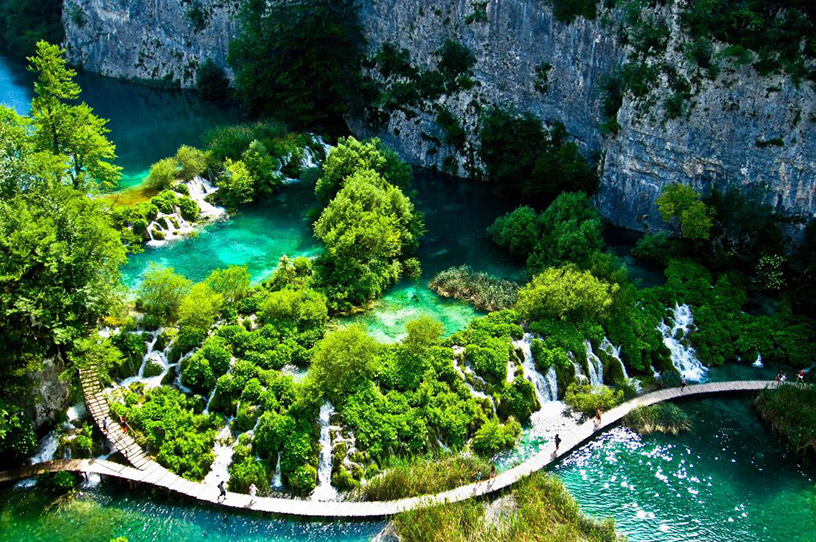
Lang Co Beach
Lang Co Beach is situated in Lang Co Bay at the foot of Hai Van Pass, approximately 75 km from the center of Hue. It was recognized as one of the most beautiful bays in the world by Worldbays in 2009. Lang Co Beach is an excellent destination for a relaxing getaway, offering long stretches of white sandy beaches, clear and pristine waters.
Lang Co is not just a beach; it combines tropical forests, winding mountain passes, and meandering rock formations. When you visit Lang Co, you can enjoy various beach activities such as swimming, snorkeling, or simply relaxing and unwinding.
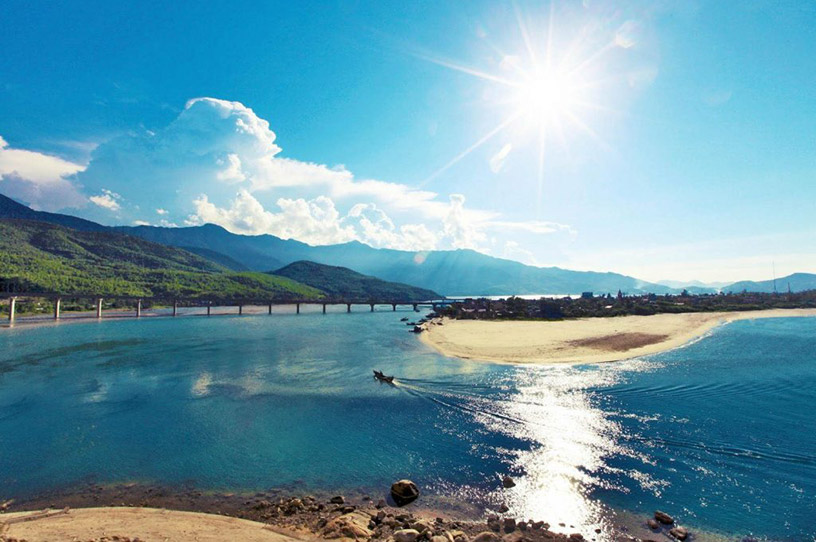
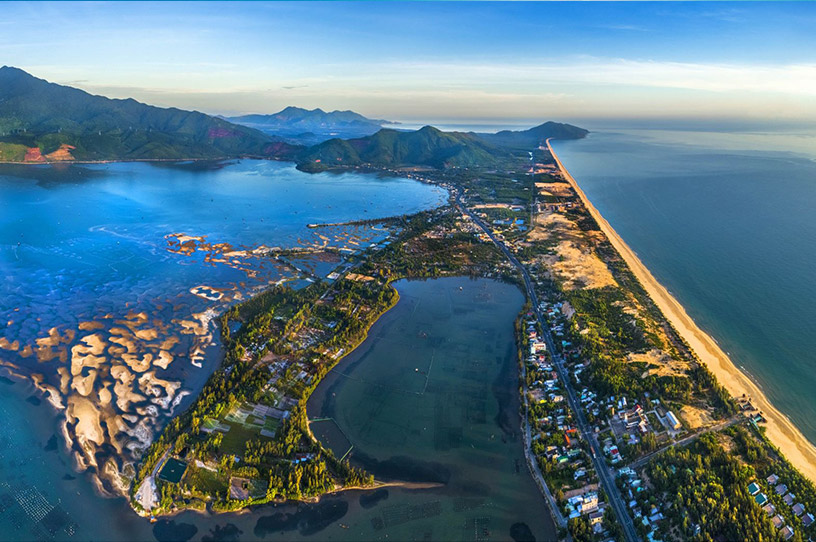
Read more: 7 Top Tourist Attractions in Hue city
Hotels and Resorts in Hue
The hotels in Hue are quite diverse, with comfortable price ranges. It is advisable to book accommodation in the central area, close to the train stations and bus terminals for convenience in transportation and visiting the city’s tourist attractions and dining options.
In the luxury segment, Hue also offers 4-5-star hotels and high-end resorts. Internationally renowned brands have invested in Hue for a long time. Here are some hotel options to consider: Melia Vinpearl Hue, La Vela Hue Hotel, Indochine Palace, Silk Path Grand Hue Hotel, and more.
Hue Cuisine
Hue cuisine is also very famous in Vietnam. Some of the distinctive dishes from Hue have become popular throughout the country, such as Bun Bo Hue (Hue-style beef noodle soup), Hue Sweet Soup, and various types of cakes made from rice flour. These are the dishes you must try when you visit Hue.
- Hue-style beef noodle soup: A spicy beef noodle soup with rich flavors.
- Savory steamed rice cake, Thick noodle soup, Clear shrimp and pork dumpling: Various types of rice cakes, each with its unique texture and taste.
- Hue Sweet Soup: Sweet dessert soups with a variety of ingredients and flavors.

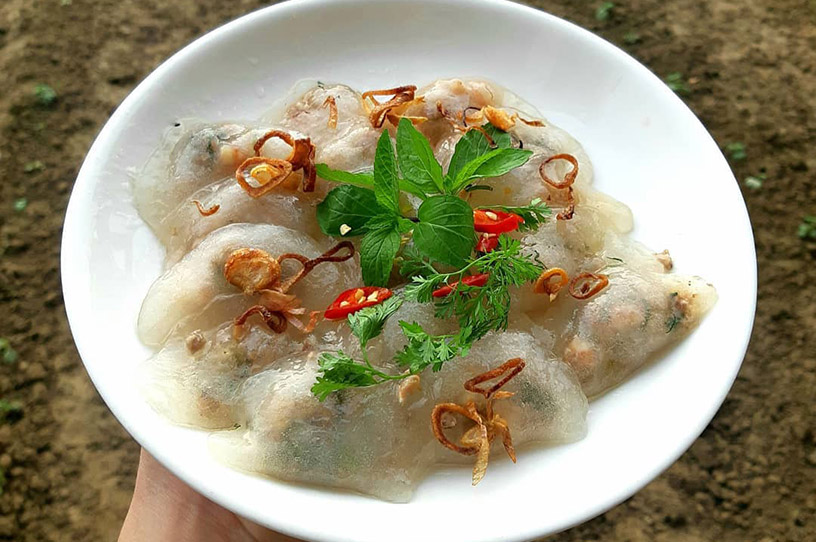
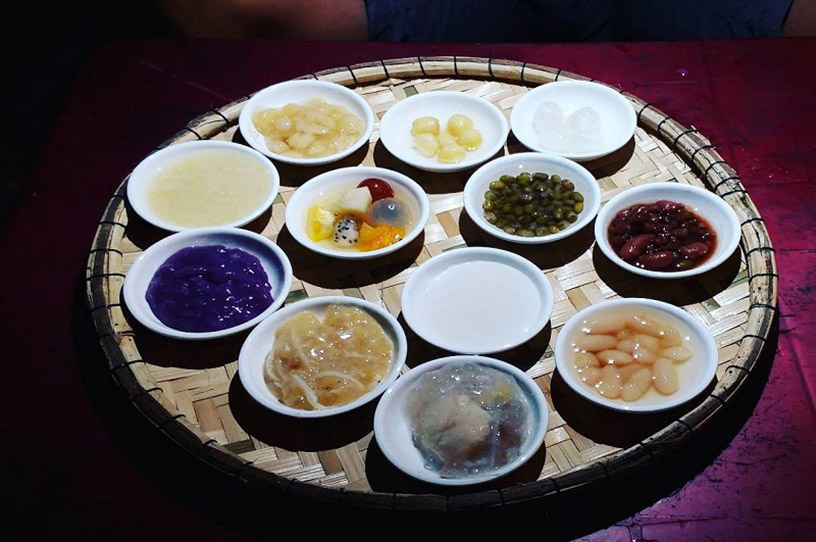
Read more: The 9 Best Dishes To Eat in Vietnam
Notes When Visiting Hue
- During peak tourist seasons, such as festivals, the number of domestic visitors to Hue is quite high, which may lead to hotels in Hue being overcrowded. It’s advisable to plan your trip to Hue early and book your accommodations to have the best choices.
- The complex of the ancient capital – Hue’s Imperial City – is vast, so it’s a good idea to determine the places you want to visit in advance and plan your routes accordingly.
- Hue’s cuisine often features spicy dishes. If you’re not accustomed to spicy food, you should let the vendors know to reduce the level of spiciness before ordering your meal.
Conclusion
The places you should visit when coming to Hue are quite diverse, including historical sites, spiritual tourism, and beach resorts. The attractions we’ve mentioned may not cover all the tourist spots in Hue, but if you can visit all the destinations listed above, you will have essentially explored Hue to the fullest. If you need advice on tours in Hue, please contact our travel consultants for assistance.


